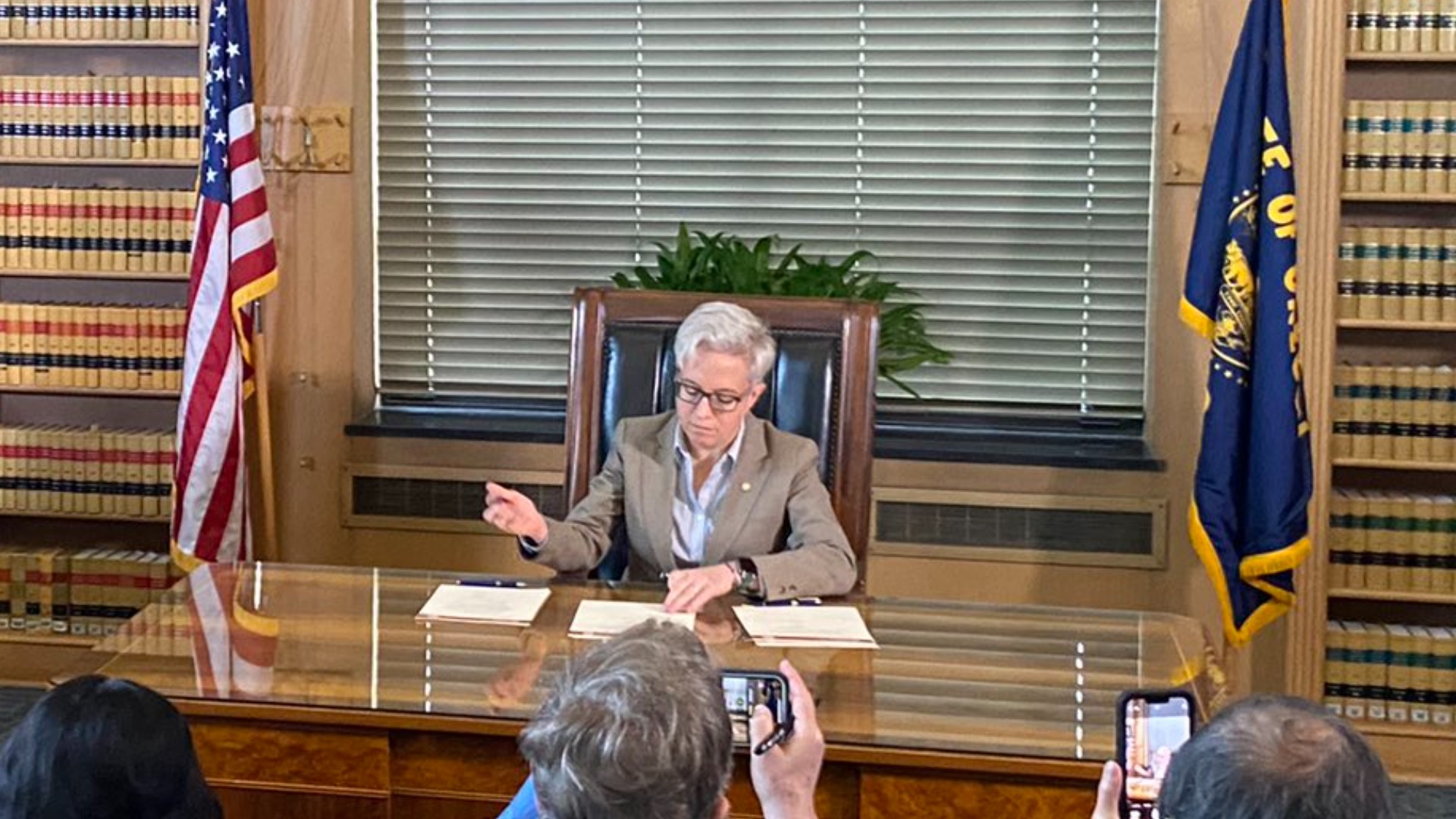SALEM, Ore. — Oregon Gov. Tina Kotek held a signing ceremony Tuesday for a trio of executive orders targeting the state’s housing and homelessness crisis, including one that declares a homelessness state of emergency in Oregon.
The state of emergency was one of two orders that Kotek previously announced during her inaugural address; the other is aimed at speeding up the pace of housing construction. The third order directs state agencies to prioritize reducing both sheltered and unsheltered homelessness statewide.
Speaking to reporters during the signing ceremony, Kotek offered more details about what each order would entail, and her plans for subsequent actions to tackle the housing crisis.
Trio of orders
The homelessness state of emergency order technically won’t apply statewide, Kotek said — it applies to parts of the state where the unsheltered homeless population has increased by 50% or more from 2017 to 2022.
“Unfortunately, that includes most of the state,” she added. “People are currently becoming homeless faster than we have been able to rehouse people who are living outside.”
The state of emergency allows for the creation of an “incident command structure,” she said, similar to the kind of emergency management structure the state or local leaders use to coordinate interagency responses during natural disasters.
The housing construction order sets a statewide goal of building 36,000 new units of housing per year, Kotek said, which would be an 80% increase over the current pace of construction. The order also establishes a Housing Production Advisory Council that will be tasked with developing a comprehensive budget and policy recommendations to hit that target.
“I set this target to reflect the level of need that exists, knowing that we will not get there overnight or even in one year, but we will ramp up over time and keep pushing for partnerships that will increase housing construction as much as possible to start meeting the needs of more Oregonians,” she said.
She later said she hoped to get the advisory council set up as soon as possible so that it could have recommendations ready by the spring. Part of the council’s job will be to look at ways to cut down on red tape and speed up approval for individual housing projects, she said, but it will also focus on workforce development to make sure there are enough people available to build the housing.
“Oregon has to be very intentional to build our homegrown workforce to do this construction,” she said.
The third order, which Kotek announced for the first time Tuesday, directs state agencies “to prioritize reducing both sheltered and unsheltered homelessness in all areas of the state, not solely those in which a state of emergency has been declared.” Those agencies should use all of their existing statutory authority to do so, she added.
Additional plans
During her inaugural address Monday, Kotek also said she planned to introduce a $130 million package of legislation that would focus on getting 1,200 unsheltered homeless residents off the streets within a year, and urged the legislature to pass it quickly during the upcoming legislative session.
The package will also expand shelter capacity by 600 beds and prevent homelessness for more than 8,000 households, Kotek's office added in an email Tuesday afternoon.
At the news conference, Kotek also stressed that the package is only intended as a first step to be taken as quickly as possible. She said her office would release her first proposed budget by Feb. 1, which will include a broader legislative package on housing issues – although she said she didn’t know yet how much that broader package would cost. The budget will also include “an equally strong commitment” to behavioral and mental health issues, she said.
Kotek said she plans to continue holding weekly meetings with Portland Mayor Ted Wheeler to coordinate their approaches to the homeless crisis. New Multnomah County Chair Jessica Vega Pederson has joined them for two of the meetings so far, she added.
She said she also plans to work with the League of Oregon Cities and the Oregon Mayors’ Association, and said she views her executive orders and the proposed $130 million legislative package as “complimentary” to the homelessness strategies that those groups have proposed, although she added that there would be a “longer discussion” during the legislative session about the Association’s proposal.
When asked if she would consider increasing Oregon’s urban growth boundaries to bring in more developable land, Kotek replied that workforce development and clearing out permitting red tape were higher priorities to speed up construction at the moment.
“We can do more production within the urban growth boundary,” she said. “We don’t need to have a big land use conversation right now, although that might be in the future.”

